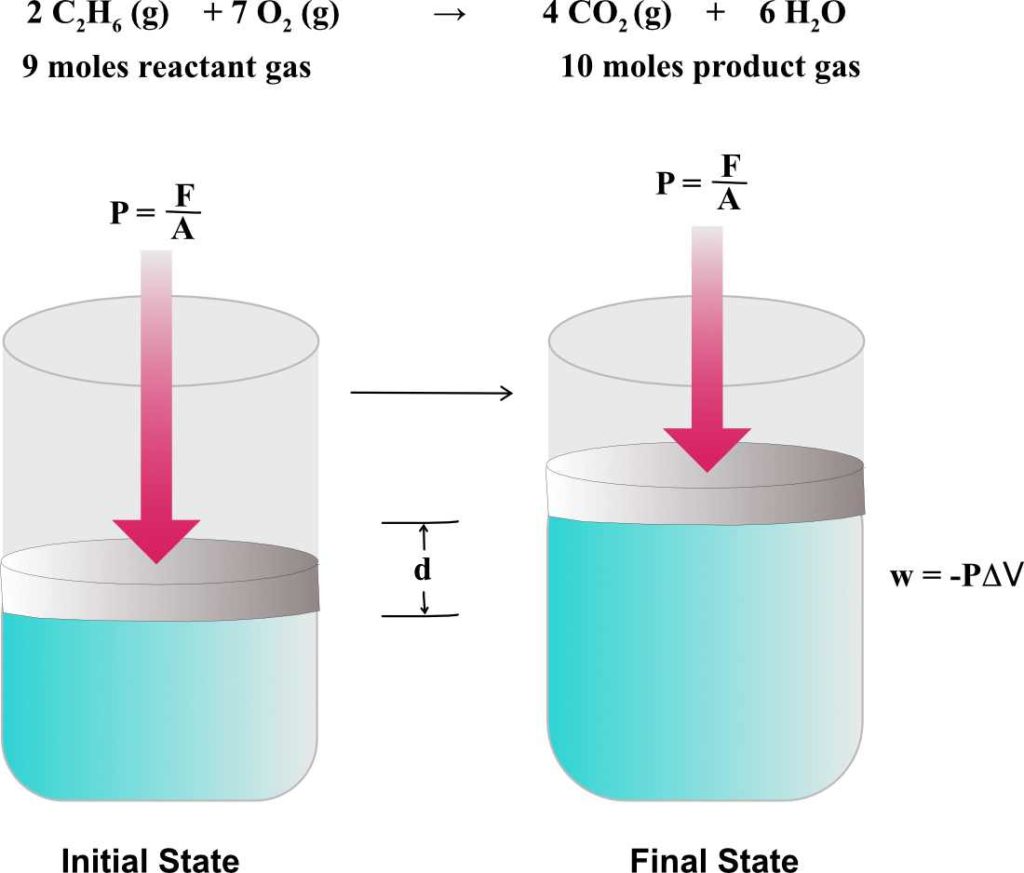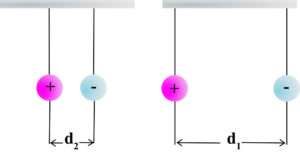Internal Energy is a state function. A state function is a property that is dependent on the current state of a system and not on the path the system takes to reach that state. The internal energy change, ΔE, only depends on the difference between the final and the initial states and not on how the change takes place.
One example of a state function is altitude. Let’s say there is a mountain that has a height of 3000 meters. The altitude is a state function because it only depends on the initial and the final states. One could climb the mountain from bottom to top. Someone else might decide to take the scenic route and travel around and around the mountain until they reach the top. Still another person might decide to climb from bottom to about midway and then travel around the rest of the mountain, to see the scenery, until she reaches the top of the mountain. It does not matter which route is taken, the altitude is still 3000 meters. Only the initial and the final heights are important–any path can be taken to get from the bottom to the top of the mountain.
Other state functions are pressure, P, enthalpy, H, volume, V, and temperature, T. ΔP, ΔH, ΔV, and Δ T all depend only on the initial and final states.
We know that ΔE = q + w. The two most important types of chemical work are electrical work and pressure-volume work. Each is explained below:
Electrical work is movement of charged particles. The electrostatic potential energy, Eel is proportional to the electrical charges on the two particles, Q1 and Q2, and is inversely proportional to the distance between the particles, d, and k is a proportionality constant. The value of k is 8.99 x 109 J⋅m/C2.
If the distance, d, becomes infinite (particles are separated), then Eel goes to zero. If both Q1 and Q2 have the same charge, the particles would repel one another due to repulsions between particles of the same charge. Eel would be positive. The potential energy would decrease as the particles are moved apart. If the particle charges are opposite, they would be attracted to one another and Eel would be positive. The potential energy would increase if the particles were moved apart. There will be further discussion about electrostatic potential in later study guides.
Pressure-volume work, PV work, is the mechanical work done when the volume of the system changes in the presence of an external pressure.
PV work is also called expansion work. Consider the following combustion reaction and the figure below:
We see there are 9 moles of reactant gas and 10 moles of product gas. If the reaction takes place in a container with a movable piston, the larger volume of the gas will push the piston upwards against the atmospheric pressure, P, doing work on the surroundings. We know that force, F is equal to the atmospheric pressure, P, multiplied by the area, A. In this case, the magnitude of the pressure is equal but the sign is opposite to the atmospheric pressure and we have -P.
The piston is pushed out by a distance, d. The work is equal to the force multiplied by the distance and we have:
The area of the piston, A, times the distance the piston moves is the change in volume, ΔV.
The pressure-volume work is:
The equation, w = -PΔV, is the work done when a gas is expanded. The negative sign indicates that work is done on the surroundings by the system.
We can calculate the work done by the system for our example above. The gas has expanded from 9 to 10 liters.
If the gas expanded against an external pressure of 5.0 atm:
The work done by the system has the unit, L⋅atm, and the units need to be in J or kJ. Because 1 L⋅atm is equal to 101 J:
The system has done 505 J of work on the surroundings.
One atm of pressure is equal to 101 x 103 kg/(m⋅s2), and a Joule has the following units: (kg⋅m2)/s2.
In the above example, work was done by the system. During the synthesis of ammonia, the volume contracts from 7.55 L to 4.25 L at an external pressure of 42 atm. Here, ΔV = 4.25 L – 7.55 L = -3.30 L. Now we calculate the work as w = -42 atm x -7.55 L = 17 atm⋅L which is equal to 1.7 x 103 J. In this case, the surroundings did work on the system, and the amount of work done is positive. If a reaction has no change in volume, then ΔV = 0 and no work has been done by the system or the surroundings.
Worksheet: First Law of Thermodynamics
Worksheet: Energy, Heat, and Work
Exercises
Exercise 1. Consider the two oppositely charged spheres hanging from strings in the figure below:
In the figure, the spheres are separated by a distance d1. The spheres are moved further apart to a distance d2.
a) What is the effect on the potential energy when the spheres are moved?
b) What effect does this have on ΔE?
c) Comment on q and w for this process.
Check Answer/Solution to Exercise 1
Exercise 2.Calculate the amount of work, in J, in a chemical reaction if the volume increases from 5.00 L to 10.6 L against an external pressure of 4.5 atm. What is the sign of w?
Check Answer/Solution to Exercise 2
Exercise 3. A Big Mac has a nutritional content of 540. Cal (1 Cal = 1000 calories). If this energy could be used to light a 100 W (1 W = 1 J/s) incandescent bulb, how many hours would the bulb stay lit?
Check Answer/Solution to Exercise 3
Exercise 4. The combustion of methane has ΔHo = -802.3 kJ. If 7.65 g of methane is reacted, and the volume change is -1.95 L at 1.00 atm of pressure, how much PV work, in kJ, is done? What is ΔE, in kJ?
Check Answer/Solution to Exercise 4
Back to Thermochemistry
Back to General Chemistry 1 Study Guides
Back to Home Page


